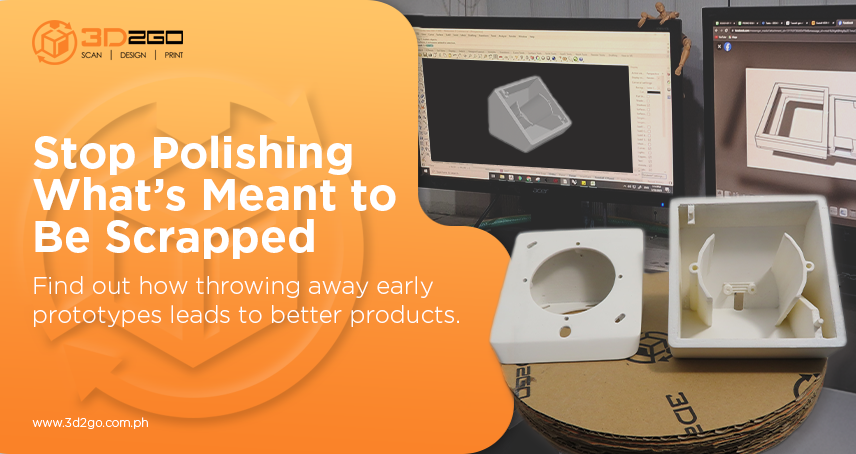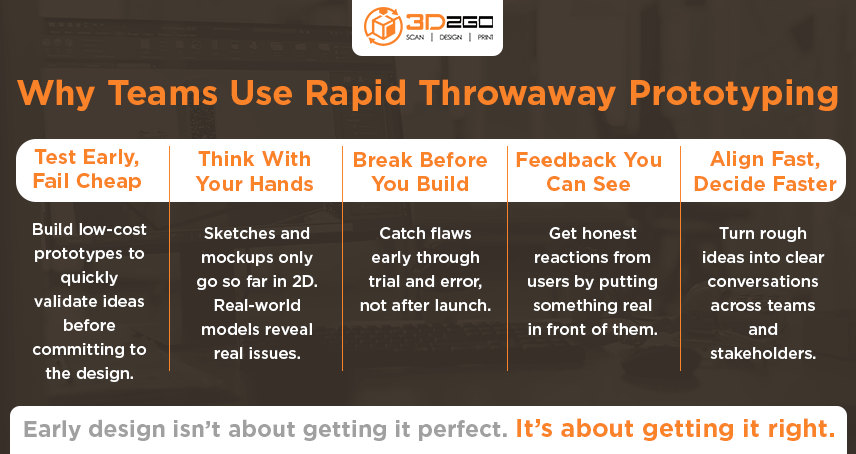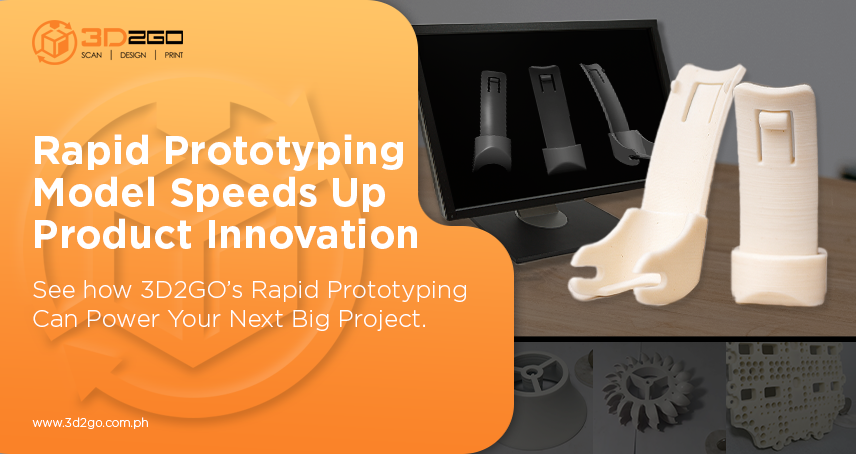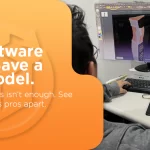
Skills Every 3D Model Maker Needs to Succeed Today
July 30, 2025
How Customized Corporate Giveaways Are Redefining Promo Trends in the Philippines
August 6, 2025When a team sets out to build something new, the earliest stage can often feel like walking into a room full of unanswered questions. What will the product look like? How will users interact with it? Is this feature even worth keeping? Trying to answer all of that with just imagination or abstract sketches rarely cuts it. This is where rapid throwaway prototyping—and by extension, rapid prototyping and manufacturing– becomes a crucial ally.
At its core, this method is all about building quick, low-cost models that aren’t meant to last. These early versions help teams test out ideas fast, gather feedback, and move forward with better-informed decisions. And once a prototype serves its purpose, it’s tossed aside to make room for the next, hopefully better, iteration.
What Is Rapid Throwaway Prototyping?
It’s exactly what it sounds like. You make a prototype fast, test it, learn something valuable, and throw it away. It is the process of creating quick and inexpensive models to test ideas and gather feedback. These prototypes are typically low-fidelity materials (sketches, cardboard models, foam mockups, or basic 3D prints) and are built with the expectation that they will be discarded after evaluation. The whole point is to avoid getting too attached to any one design early on. By keeping things low-stakes, teams stay flexible. There’s less pressure to make something perfect and more room to explore.
These prototypes can range from simple paper mockups to more hands-on, rough 3D-printed objects. They’re not polished, and they’re not supposed to be. What matters is that they help teams think with their hands, not just their heads.
Why Rapid Throwaway Prototyping Matters in Early-Stage Design
In early-stage design, teams face many unknowns: user preferences, functional requirements, technical constraints, and even market viability. You’re often juggling dozens of ideas while trying to zero in on the one worth pursuing. Spending weeks or months refining a single concept too soon? That’s a recipe for sunk costs and missed opportunities.
Rapid prototyping helps sidestep that trap. Here’s how it helps teams stay sharp and productive during those first critical phases:
1. It Speeds Up the Learning Curve
Ideas can sound flawless in a brainstorm, but until you build and test them, it’s all theory. A quick prototype turns those abstract discussions into something you can actually interact with. It gives teams something tangible to critique. You find out what works, what doesn’t, and what needs rethinking, all in a fraction of the time it would take to develop a polished version.
2. It Lowers the Stakes for Experimentation
One of the best things about this method is its disposability. Since these early prototypes are cheap and fast to make, there’s no fear of “wasting” them. That opens the door to experimentation. You can take creative risks without worrying about sunk costs, which often leads to unexpected breakthroughs.
3. It Brings Everyone to the Same Page
When people from different disciplines (designers, engineers, marketing teams) collaborate, it’s easy for ideas to get lost in translation. A physical prototype makes things clearer. It’s much easier to have productive conversations when everyone can point to the same object and say, “This works,” or “That doesn’t feel right.”
4. Gathering User Feedback Early
User testing at this stage doesn’t need to rely on full-functioning products. Even a rough mockup is enough to see how people interact with it. Does the shape feel natural in the hand? Is the layout confusing? These are the kinds of insights that only come when you put something real in front of users early on.
5. Reduces the Risk of Late-Stage Changes
Fixing a mistake is much easier when you catch it early. The further along you go without validating core ideas, the more painful it becomes to change course. Rapid throwaway prototyping is a safeguard. It helps teams catch design flaws and usability issues before they become expensive problems.
When Is Rapid Throwaway Prototyping the Right Move?
This approach is most suitable when you’re still defining the overall vision, before final specs are finalized and high-fidelity versions begin to consume significant resources. It’s especially useful when you’re trying to answer questions like:
-
Will users understand how this works?
-
Is this feature necessary, or does it just add clutter?
-
How should this product feel in the hands?
You’ll see this method in action across a wide range of industries: consumer electronics, product design, healthcare devices, automotive interiors, even wearable tech. Whenever physical interaction is crucial and decisions must be made quickly, it’s a smart move.
What Do These Prototypes Actually Look Like?
They come in all shapes and sizes, depending on the goal. Sometimes it’s a sketch on a whiteboard. Other times, it’s foam cutouts glued together to simulate size and proportion. For more tactile feedback, quick 3D-printed parts can go a long way in visualizing form and fit.
Some options include:
-
Paper sketches: Ideal for early UI concepts or workflows.
-
Foam board or cardboard models: Good for visualizing physical dimensions.
-
3D printed models: Useful for functional tests or tactile evaluations.
-
Basic CAD mockups: Offers a fast way to translate sketches into something testable.
In many cases, teams pair 3D modeling with basic printing tools to turn digital sketches into real-world objects in a matter of hours. It’s fast, cost-effective, and delivers just enough realism to validate an idea before diving deeper.
A Powerful Tool for User-Centered Design
Designing around user needs requires more than surveys or interviews. It means letting people experience the product—even in a rough form—so you can watch how they interact with it.
That’s where rapid throwaway prototyping really shines. By giving users something they can touch, hold, or navigate, teams can gather reactions based on actual behavior, not just opinions. That feedback becomes the foundation for a more refined and thoughtful design later on.
It also helps keep the focus where it should be: on solving real problems, not just making things look good.
A Few Things to Watch Out For
As helpful as this method is, it does come with limitations.
-
Low-fidelity prototypes can mislead: Stakeholders may misinterpret the value or viability of a design based on incomplete visuals or function.
-
Overuse may stall decision-making: If teams focus too much on iterating without narrowing down options, projects can lose direction.
-
Not suitable for final validation: These prototypes are not meant to be production-ready. Teams will still need higher-fidelity models for later stages.
That said, these limitations can be managed with clear goals, timelines, and communication.
How 3D2GO Can Help You Prototype Smarter
For teams looking to get their ideas off the ground quickly, 3D2GO is a practical partner. We offer complete 3D services that fit seamlessly into rapid prototyping workflows—whether you need fast 3D modeling, quick 3D prints, or even 3D scanning of existing parts.
What makes us different? We’re hands-on, local, and experienced in handling everything from small one-off prototypes to complex multi-part projects. Our team helps translate concepts into physical models that are functional enough to test and flexible enough to change.
If you’re working through early-stage design and need a way to prototype quickly without slowing down your team, we’re here to help.
Ready to Build, Test, and Learn?
There’s a reason more teams are leaning into rapid throwaway prototyping early in the development process. It’s fast, low-risk, and deeply informative. When done right, it becomes a powerful way to turn uncertainty into clarity and good ideas into even better ones.
Need a reliable partner to turn sketches into something real? 3D2GO can help you move from idea to prototype faster. Get in touch with us today and let’s talk about how we can bring your next design to life.

